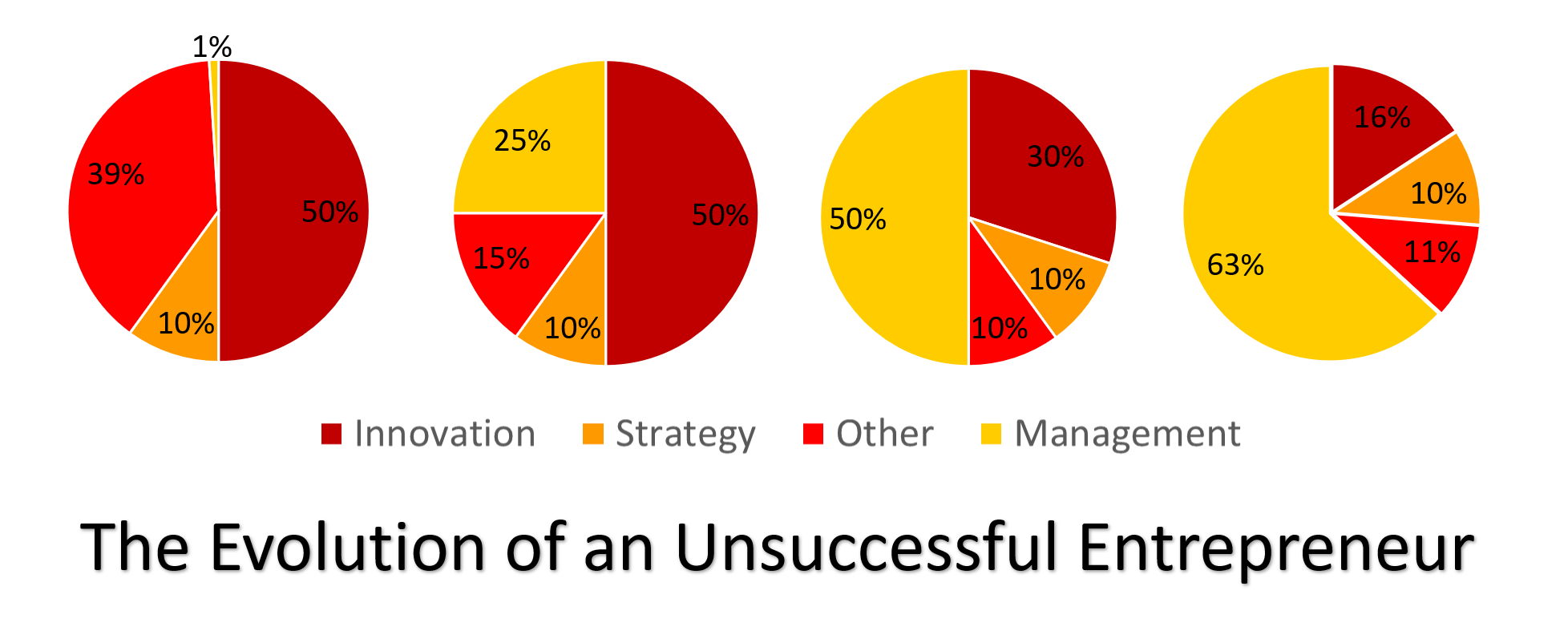Management that Provides Success
Written by Peter Turgoose
The publication of a 2019 research paper in the Strategic Entrepreneurship Journal shows that start-ups who create middle management roles are significantly more innovative and more successful than those who do not. This finding appears to have surprised its readers more than intended. Their surprise is perhaps rooted in a number of myths built around the premise that ‘flat is good; hierarchy is bad and leads to bureaucracy.’ This premise is coupled with a fundamental misunderstanding of decentralised decision making structures, such as holocracy, which have grown in prominence in the last decade. As will be argued later, using the term “middle management” is unhelpful because it implies that management is a job. Since management is a role, not a job, I’ll use the term “middle-tier jobs” which can include management work and roles.
The Unsuccessful Entrepreneur
It is easy to see how a first-time entrepreneur could find themselves diverted, and then overwhelmed, by the management work that is necessary to keep their show on the road as it starts to grow. A one-person organisation is the epitome of design simplicity. Such a simplistic design requires a person who is multiskilled to fulfill multiple roles beyond developing innovative products and services. They also need to create a business direction and take on the roles of strategy setter, planner, marketeer, salesperson, operations, IT, etc. As the business grows that person normally decides that they need to either bring on another person or outsource some of the work. Although this will reduce the total work demand on them and create some headroom for our entrepreneur to focus on innovation, it also creates a new role for them either in managing the work of the new hire or the outsourced contract.
The more the business grows, the more new hires an entrepreneur brings onboard. This creates a cycle where they find themselves managing people and their work, while also keeping everyone aligned on the business direction and strategy. All of these roles eat into the time our entrepreneur wants to spend on the business they set up for in the first place. The opposite happens though; they spend less and less time innovating the product or service they created.
If our entrepreneur avoids introducing management roles because they believe that hierarchy is bad, they are going to have less and less time for their core innovative work. As a result, their business will never achieve its full capability.
Designing Jobs that Manage
Eventually, our entrepreneur has to put aside their bias against hierarchy and introduce management roles into new jobs. Data from the aforementioned study suggests that the sooner this is done, the more successful the business will be. However, in doing so they must design middle-tier jobs that maintain the agility and fluidity that make start-ups successful. In the same way, the multi-skilled entrepreneur has a job made up of multiple roles, so must the new middle-tier jobs. In an agile and innovative structure, management should never be the sole purpose of a job, it is a role within a job. Nor should management necessarily imply hierarchy. It merely means that a role within a job is to manage work or people. Believe it or not, management roles can exist in a flat structure.
Although the concept of multi-skilling found traction and favour in the 1980s as a means of improving efficiency, effectiveness, and employee satisfaction, holocracy has retaught us that the roles within a job can be fluid. Middle-tier jobs must create headroom for the entrepreneur by taking on the management of work and people whilst remaining innovative and multiskilled. The remaining roles within the job must remain fluid and not lock the job holder into a fixed routine.
Data tells us that middle-tier jobs are a key to success, but warns us not to design this job solely as a management tier. Design middle-tier jobs that are fluid enough to fulfill management roles whilst also fully contributing to the core innovation processes of the business.
The days when managers managed and workers did the work are long gone. Multi-skilling has enabled the design self-directed teams who absorb management tasks into their work, with different jobs in the team absorbing different management roles. The time has come to stop talking about designing middle management jobs. In the middle-tier, management is no longer the sole purpose of a job, management is one role in a multi-skilled middle-tier job. Well-designed middle-tier jobs will drive innovation and success, an unnecessary management tier will stifle innovation and success.
Peter Turgoose is a Consultant at ON THE MARK. OTM has been in business since 1987 and is a leading organization design firm. Over our 31 years in business, OTM has completed close to 450 redesigns around the globe across most industries. Our experience and passion for collaborative business transformation is supported by pragmatism, systems thinking, and a belief in people that’s unparalleled.



